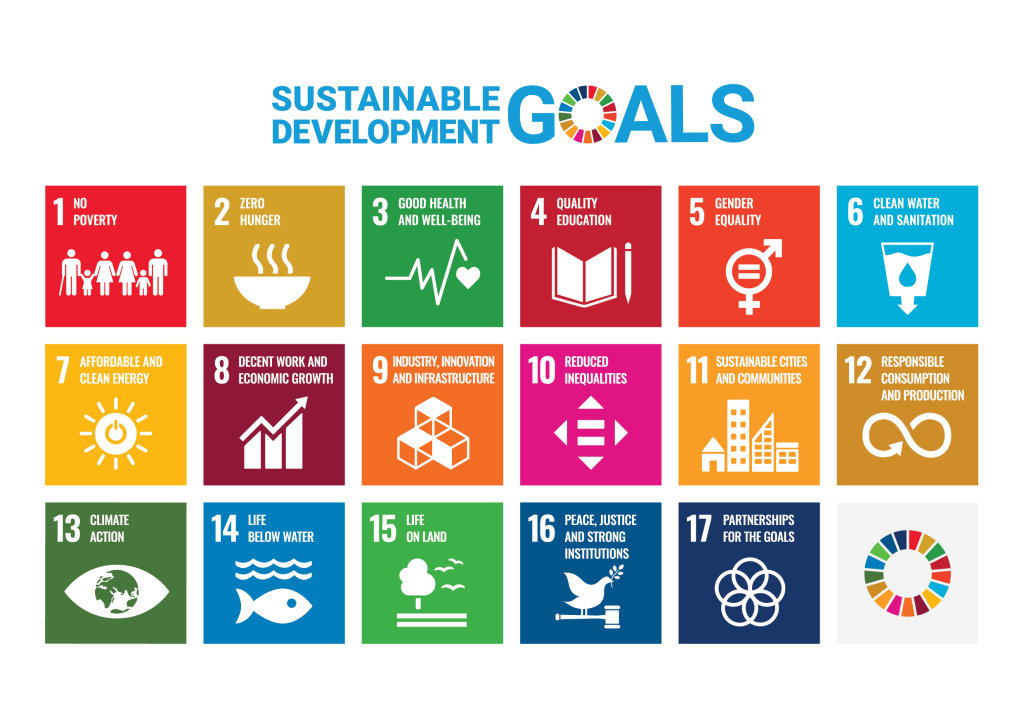
In the contemporary global context, sustainable development has emerged as a paramount priority. The Sustainable Development Goals (SDGs), also known as the Global Goals, are a comprehensive set of 17 objectives adopted by the United Nations General Assembly in 2015. These goals are designed to foster prosperity while safeguarding the ecological equilibrium. They address critical global challenges, including poverty, inequality, climate change, and environmental degradation, thereby serving as a unifying framework for nations worldwide to take action towards a greener and caring world under the agenda of “Transforming our world: the 2030 Agenda for Sustainable Development” in care of People, Planet, Prosperity, Peace and Partnership.
The historical journey of the SDGs traces its origins to the 1970s, when the concept of sustainable development was first conceptualized. However, a significant milestone was achieved in 2000 with the adoption of the Millennium Development Goals (MDGs), which primarily focused on eradicating poverty, hunger, and disease. The MDGs laid the foundation for the SDGs, which build upon and expand the scope of the earlier goals.
The formulation of the SDGs involved inclusive consultations with governments, businesses, civil society organizations, and the general public. These goals are universal in nature, applicable to all nations regardless of their stage of development. Their integrated and indivisible design recognizes the interconnectedness of progress across various domains.
The 17 SDGs constitute a comprehensive framework that addresses the major global challenges we face today. Each goal targets a specific issue, ranging from social and economic development to environmental sustainability. A brief overview of each goal is as follows:
- No Poverty – Ending poverty in all its forms everywhere.
- Zero Hunger – Ending hunger, achieving food security, and improving nutrition.
- Good Health and Well-being – Ensuring healthy lives and promoting well-being for all at all ages.
- Quality Education – Ensuring inclusive and equitable quality education and promoting lifelong learning opportunities for all.
- Gender Equality – Achieving gender equality and empowering all women and girls.
- Clean Water and Sanitation – Ensuring access to safe and affordable drinking water, sanitation, and hygiene for all.
- Affordable and Clean Energy – Ensuring access to affordable, reliable, sustainable, and modern energy for all.
- Decent Work and Economic Growth – Promoting sustained, inclusive, and sustainable economic growth, full and productive employment, and decent work for all.
- Industry, Innovation, and Infrastructure – Building resilient infrastructure, promoting inclusive and sustainable industrialization, and fostering innovation.
- Reduced Inequalities – Reducing inequality within and among countries.
- Sustainable Cities and Communities – Promoting inclusive, safe, resilient, and sustainable cities and human settlements.
- Responsible Consumption and Production – Encouraging patterns of consumption and production that reduce environmental degradation and enhance resource efficiency.
- Climate Action – Taking urgent action to combat climate change and its impacts.
- Life Below Water – Conserving and sustainably using the oceans, seas, and marine resources.
- Life on Land – Protecting, restoring, and promoting sustainable use of terrestrial ecosystems.
- Peace, Justice, and Strong Institutions – Promoting peaceful and inclusive societies for sustainable development and building effective, accountable, and inclusive institutions at all levels.
- Partnerships for the Goals – Strengthening global partnership and cooperation to achieve the SDGs.
In recent years, China has made significant progress towards achieving the SDGs. The country has integrated the SDGs into its national development plans and implemented various policies and initiatives to promote sustainable development. China’s emphasis on poverty reduction, sustainable urban development, climate change mitigation, and sustainable production and consumption practices have been particularly noteworthy. Through targeted poverty alleviation programs, the country has achieved remarkable reductions in poverty rates. In addition, China has been promoting green urbanization by improving infrastructure, enhancing public transportation, and encouraging the adoption of green building practices. The government has also implemented policies to reduce air pollution and greenhouse gas emissions, demonstrating its commitment to environmental protection.
In conclusion, the SDGs provide a comprehensive roadmap for global transformation towards a more sustainable future. By embracing these goals, nations can work towards a world where economic growth, social inclusivity, and environmental sustainability coexist harmoniously. China’s progress in implementing the SDGs offers valuable insights and inspiration for other countries seeking to align their domestic agendas with global sustainable development objectives.
